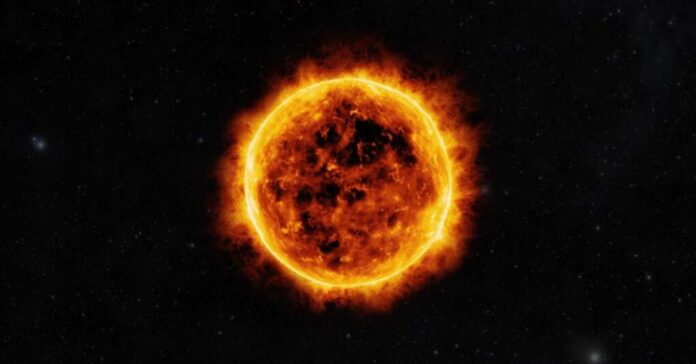
As we approach the anticipated peak of Solar Cycle 25, the sun’s recent behavior is poised to influence space weather dynamics significantly, prompting a close examination of recent events and their potential implications.
On February 25, at approximately 10:15 p.m., Earth encountered a noteworthy event in the form of a coronal mass ejection (CME), as reported by SpaceWeather.com. The reassuring news is that the impact was relatively mild, sparing us from a severe geomagnetic storm. This particular CME originated on February 21 from a magnetic field in the Sun’s northern hemisphere.
Simultaneously, the celestial stage is witnessing the emergence of a formidable player—Sunspot AR3590. This celestial giant is steadily expanding, capturing the attention of both astronomers and weather forecasters alike. Recent observations, including a two-day movie from NASA’s Solar Dynamics Observatory, vividly depict the sunspot’s substantial growth, boasting a 25% increase in area over a mere 48 hours. Presently, AR3590 proudly holds the distinction of being the most giant sunspot in Solar Cycle 25.
Sunspots, those enigmatic dark spots on the Sun’s surface, arise from intense magnetic activity. Despite their darker appearance, sunspots retain incredible warmth. They result from the intricate and contorted lines of the Sun’s magnetic field, disrupting the average heat flow. Sunspots often correlate with solar flares and coronal mass ejections (CMEs)—mighty discharges of energy and matter. The Sun undergoes an 11-year solar cycle during which the number of sunspots fluctuates, influencing solar activity. Scientists diligently monitor these phenomena using telescopes and spacecraft to comprehend the Sun’s behavior, predict potential space weather effects, and safeguard communication systems and satellites.
AR3590 demonstrated its might in the past week by unleashing three potent X-class solar flares, including a record-breaking X6.3 flare—the most powerful in the current solar cycle. Yet, apprehensions are now mounting as experts consider the possibility that AR3590 might be gearing up for another significant Class X flare.
The potential ramifications for Earth are a focal point of concern for weather forecasters, given AR3590’s current positioning directly facing our planet. Should a powerful flare occur, it would be geopotential, indicating that the ensuing solar storm would be directed straight at Earth, potentially causing disruptions if it proves severe enough.
In a worst-case scenario, Sunspot AR3590 unleashes an unprecedented X-class solar flare, dwarfing all previous eruptions in Solar Cycle 25. This cataclysmic event triggers a massive coronal mass ejection (CME) directly aimed at Earth, resulting in a severe geomagnetic storm. The storm’s impact wreaks havoc on communication systems, satellites, and power grids worldwide.
As the powerful solar radiation inundates the Earth’s atmosphere, widespread disruptions occur, causing extensive blackouts and communication failures. Airline routes are rerouted to avoid dangerous radiation levels, and GPS navigation becomes unreliable.
The intense magnetic fluctuations induce auroras visible at lower latitudes than usual, captivating observers but signaling the underlying chaos in the Earth’s magnetosphere.
Emergency response teams mobilize to address the widespread infrastructure damage and assist affected populations. Governments implement contingency plans to mitigate the long-term effects of the solar storm, prioritizing the restoration of critical infrastructure and communication networks.
This heightened concern underscores the importance of ongoing vigilance in monitoring AR3590. Researchers at Northwest Research Associates (NWRA) diligently utilize NASA’s Solar Dynamics Observatory (SDO) data to scrutinize minute signals in the Sun’s upper atmosphere, known as the corona. These signals are pivotal in pinpointing areas on the Sun where solar flares are most likely to occur, offering crucial insights for predicting space weather and mitigating disturbances on Earth.
Moreover, in its current expansive state, AR3590 covers 60% of the surface area of the renowned sunspot responsible for the Carrington event of September 1859. This historical solar storm caused considerable disruptions, even with the technological constraints of the 19th century. The comparison underscores the potential impact that AR3590 could have in our technologically advanced era, prompting heightened awareness and preparedness among scientists and space weather forecasters alike.






